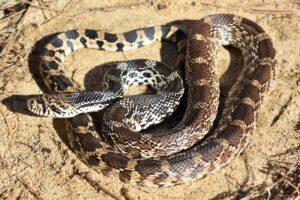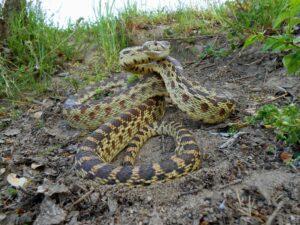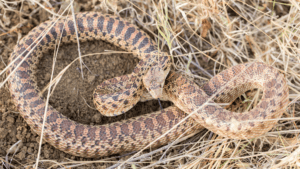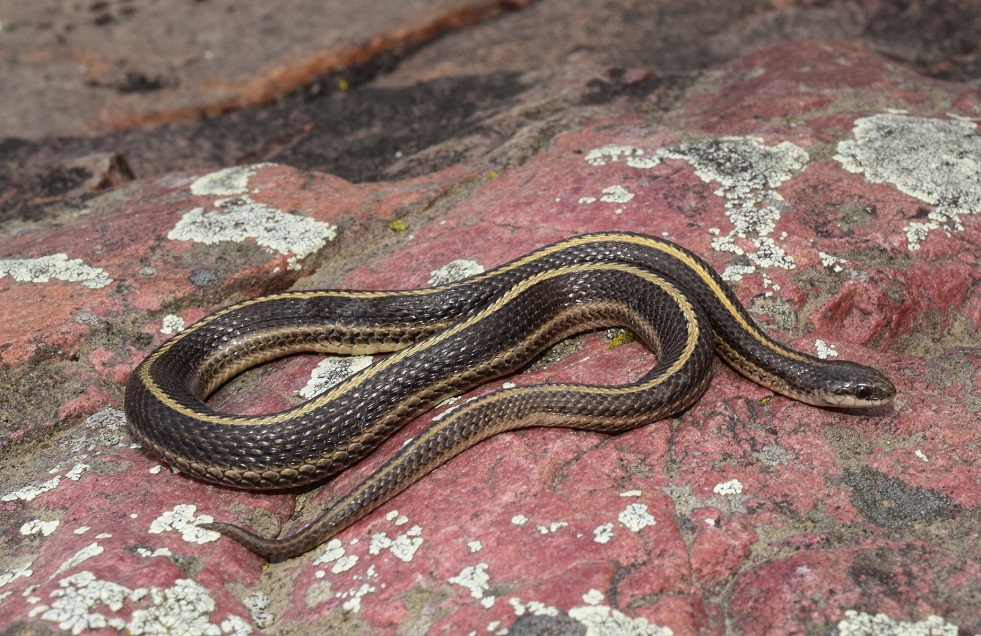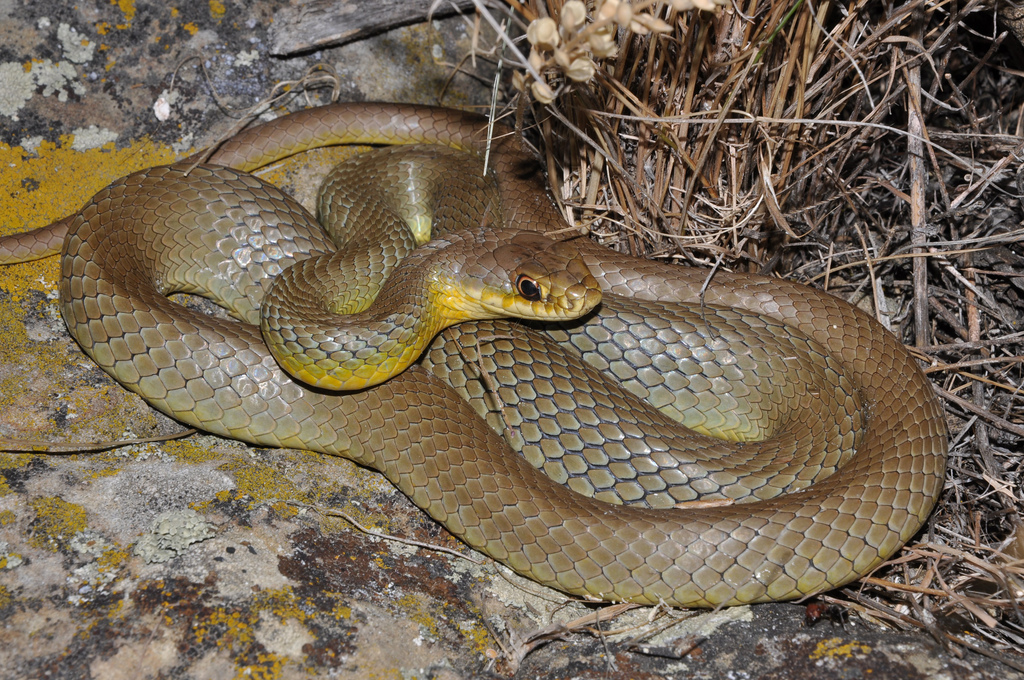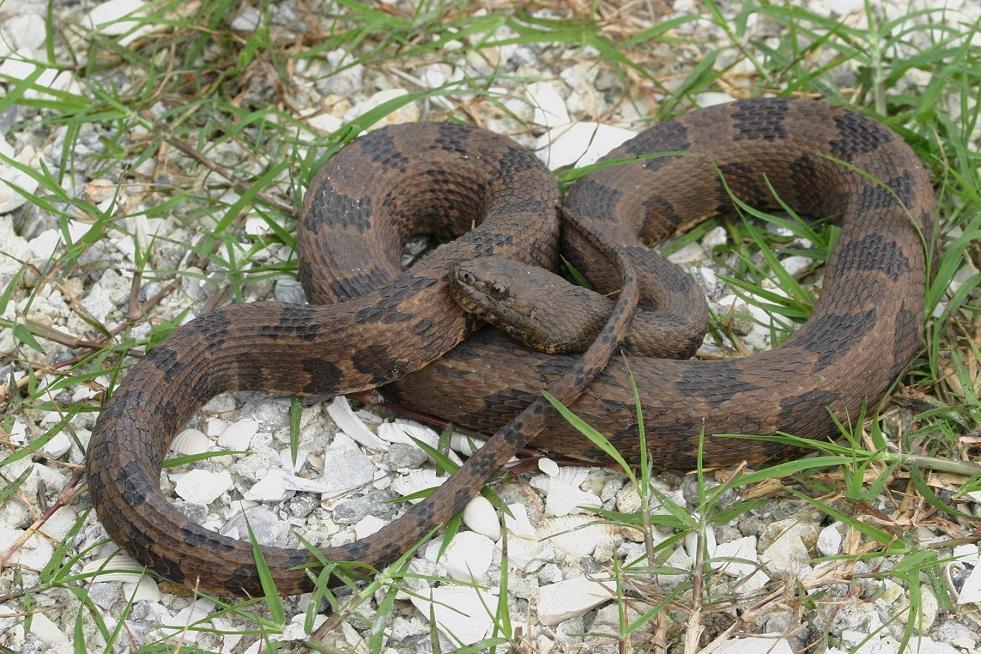Pacific Gopher Snake (Pituophis catenifer catenifer)
Updated on
12/12/2022The pacific gopher snake, a nonvenomous snake, is a subspecies of the Pituophis catenifer, a gopher snake species. It is a widespread species in North America with a wide range, found throughout the U.S., Mexico, and southern Canada.
Scientific Classifications
- Suborder:Serpentes
- Family:Colubridae
- Genus:Pituophis
- Species:P. catenifer
Conservation Status
Description
Size
The adults reach a height of 36 – 84 inches, though the average length of most subspecies is 48-60 inches.
Color and Appearance
Their color could be yellow or dark brown, with grayish shades on the sides. One of the unique identifying features is the numerous spots on their body.
Their body is covered with 40-100 spots, while the tail has around 15-35 spots. There are 2-3 rows of spots to the side of their body, arranged alternately in black and brown. A striped variety of this species has been detected in California’s Solano County.
Its prominent physical features include a narrow head widening towards the neck alongside keeled scales. It also has a rostral scale or median plate at the tip of its snout.
Are They Dangerous to Humans
The pacific gopher snakes inflate their bodies, flatten their heads, and shake their tails vigorously if startled or threatened. They may even bite out of aggression. However, their bite isn’t venomous, and these snakes are harmless to humans.
Pacific Gopher Snake at a Glance
Distribution
They could be found throughout the United States, Mexico, and parts of Canada, mainly Alberta and British Columbia.
Habitat
Their common habitats include deserts, brushlands, prairies, coniferous forests, and woodlands.
Lifespan
Like most gopher snake species, the Pacific gopher snake lives for 10 to 15 years in the wild and as long as 33 years when kept in captivity.
Predators
Their predators in the wild include coyotes, foxes, and red-tailed hawks. Big king snake species may consume them too.
Diet
These carnivorous snakes feed on small mammals like gophers, rabbits, birds, and their eggs.
Reproduction
Mating occurs in spring, and the female gophers are oviparous, laying around 3 to 9 eggs per batch in summer. They take around 2-2.5 months to hatch. When kept in captivity, the Pacific gopher snake goes into a state of dormancy during winter to improve the breeding process. They lay more eggs in their wild habitat – 12-14 on average, which takes the same amount of time to hatch in the wild.
Similar Species
The Pacific gopher is similar to rattlesnakes in appearance and the aggression they show when threatened; no wonder often confused with the latter. Yet, the two are different in several ways. The gopher snake has a long, slender appearance with a narrow round head against the broad, heavy-bodied stature and flat, triangular-shaped head of rattlesnakes. The gopher snakes aren’t venomous like the rattlesnake.
Pet Care Sheet
Housing
A 20-gallon tank suits growing snakes well, while adults thrive well in a 30-gallon tank.
Temperature
They require a basking temperature of about 85°F.
Substrate
Paper cage liners and wood shavings are some of the substrate options.
Lighting
These snakes don’t need any specialized lighting like UVA or UVB. However, the amount of light they receive can impact their breeding and feeding behavior. For instance, if a snake can see the light coming from outside, he would be able to understand the time when the days shorten. It would help him prepare for the winter by lessening his food intake.
Source
sdherps.org, slitherbriggs.webs.com, santacruzmuseum.org

